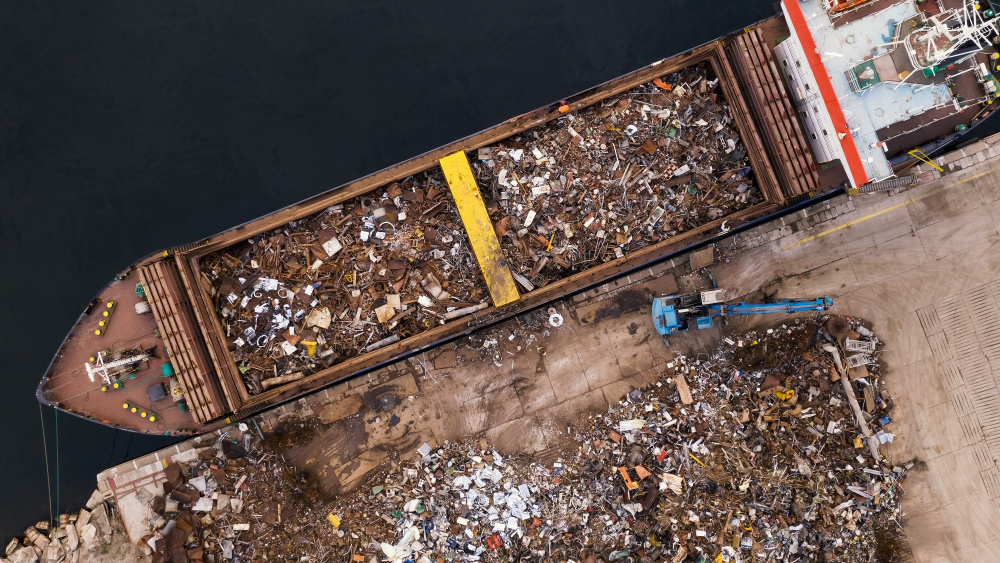Exports in recyclable raw materials decreased in 2024

In 2024, exports of recyclable raw materials, which include recyclable waste and scrap as well as other secondary raw materials (by-products), from the EU to non-EU countries amounted to 35.7 million tonnes, an 8.2% decrease compared with the previous year. 2023 was a record year for exports of recyclable raw materials as volumes reached 38.9 million tonnes, the highest in 2 decades.
Although exports decreased in 2024, the amount was still 58.5% higher than in 2004 (+13.2 million tonnes).
Meanwhile, imports of recyclable raw materials from non-EU countries into the EU amounted to 46.7 million tonnes in 2024, an increase of 7.0 million tonnes compared with 2023 (+17.5%). Looking back to 2004, imports rose by 7.2% (+3.1 million tonnes).
Source dataset: env_trdrrm
Highest export: metals; highest import: organic materials
In 2024, the EU exports of metals amounted to 19.0 million tonnes, accounting for more than half (53.3%) of all recyclable raw materials exports. The second-largest category was paper and cardboard (5.5 million tonnes; 15.3%), followed by organic materials (4.4 million tonnes; 12.2%).
In terms of imports to the EU, the largest category was organic materials (28.4 million tonnes), accounting for 60.7% of all recyclable raw materials imports. The second-largest category was mineral at 6.8 million tonnes (14.5%), followed by metal, with 6.3 million tonnes (13.5%).
Source dataset: env_trdrrm
Türkiye and Brazil remain main trade partners
As in 2023, Türkiye was the top destination for EU exports of recyclable raw materials in 2024, with a volume of 12.3 million tonnes. The second destination was the United Kingdom (3.8 million tonnes), followed by India (3.1 million tonnes), Egypt (1.8 million tonnes) and Switzerland (1.6 million tonnes).
EU imports of recyclable raw materials in 2024 were predominantly from Brazil (9.8 million tonnes), Argentina (7.8 million tonnes), the United Kingdom (4.5 million tonnes), Ukraine (4.2 million tonnes) and Indonesia (2.4 million tonnes).
For more information
Methodological notes
- Recyclable waste and scrap as well as secondary raw materials are recycled and re-injected into the economy as new raw materials. The scope of ‘recyclable raw materials’ includes only waste that can be recycled and secondary raw materials (by-products) and it is different from the data on trade in waste. These are measured in terms of relevant product codes from the Combined Nomenclature used in international trade in goods statistics.
- Organic materials are defined as products originated from animal and vegetal sources that are not included in other categories of raw materials of the classification system used in this publication, e.g. vegetal wastes including waste from forestry and food preparation, animal and mixed food wastes, fats, etc. These materials can be processed into oils, which are commonly used in applications ranging from machinery lubrication to the production of pharmaceuticals, cosmetics, soaps, and chemicals. For more information, you can consult the table of correspondence linked in the previous paragraph.
If you have any queries, please visit our contact us page.


